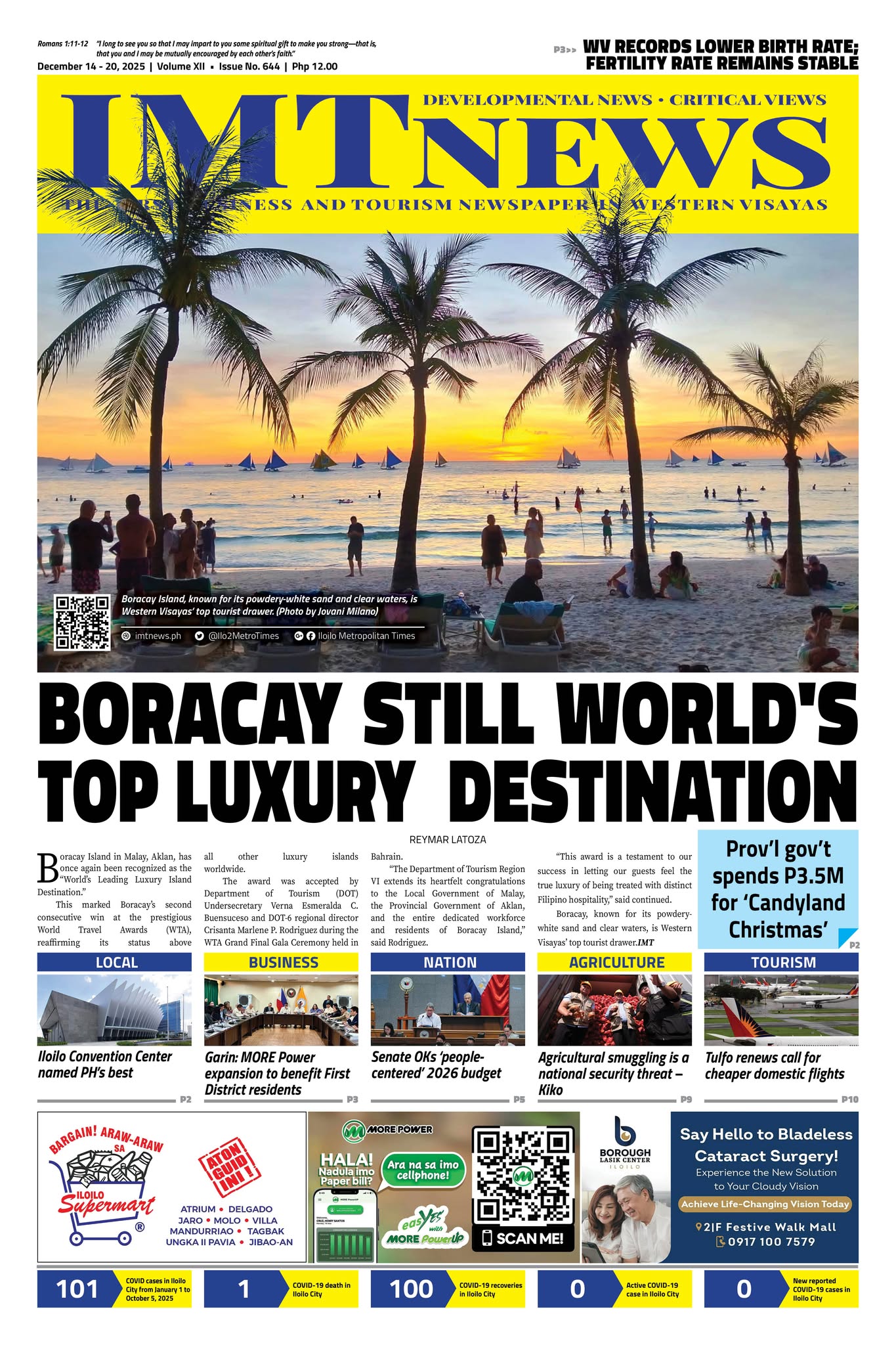You hear it on a jeep from Lacson to Libertad or in a faculty room from Bacolod to Barotac: someone says she’s Negrense, slips into a Hiligaynon story, and a friend calls her Ilonggo. No one corrects anyone. The labels only get tricky when we stop them from moving. In real life, they travel with us—across islands, tongues, family trees, school IDs, and voter’s slips. For me, that overlap is home. My mother was born in Silay—Negrense by birth. My father, from Capiz, settled in Iloilo and spoke Hiligaynon. If I were to explain it in class, I would use set theory: let Set A be Negrense—those rooted in Negros. Let Set B be Ilonggo—often Hiligaynon speakers or people of Iloilo. Their intersection, A∩B, is not confusion—it’s identity.
Words matter. A Negrense is simply someone from Negros Island. Ilonggo comes from Ilong-ilong, the old name for Iloilo City, and traditionally refers to the people and culture of Iloilo. Over the years, however, it has also been used to describe speakers of Hiligaynon. Linguists say Hiligaynon is the language, while Ilonggo is the name of the people who speak it. It’s not about being formal—it’s about honoring our differences.
That diversity runs deep. Panay speaks in many tongues. Hiligaynon by the sea, Kinaray-a inland, Capiznon up north, Aklanon in the west, and Suludnon and Inati in the mountains. Calling everyone “Ilonggo” blurs a rainbow of voices. Each language sings its own song. That’s why being Ilonggo or Negrense isn’t a division—it’s an embrace. A Bacolod student writing in Hiligaynon carries both names, and both belong. A Dumaguete nurse speaking Cebuano is Negrense but not Ilonggo by tongue. An Iloilo teacher using Kinaray-a is Ilonggo by province, but not by first language. The mix isn’t a problem; it’s what makes our archipelago human.
History shows why this overlap feels natural. Long ago, settlers from Panay crossed the Guimaras Strait to work in the sugarcane fields of Negros, bringing their speech, kinship, and dreams. Over time, Negros developed its own heartbeat—Negrense by spirit, still linked to Iloilo by language and love. Out of this came familiar jokes—“tikalon” versus “kuripot,” daring versus cautious—echoes of history more than stereotypes. Migration, labor, and love shaped both sides of the strait.
In classrooms, these stories continue. Ask students to trace their family language, and you’ll see how layered our roots are: a lola in Pontevedra who ends sentences with “ya,” a father from Sagay who learned Hiligaynon in the fields, a mother from San Joaquin switching between Hiligaynon and Kinaray-a, cousins in Polomolok still calling themselves Ilonggo because that’s what home means to them. There’s no contradiction here—just connection. Language, when named with care, helps us see one another clearly.
Even within Hiligaynon itself, variety thrives. The version spoken in Bacolod, Iloilo, or Mindanao differs slightly in accent and phrasing but remains deeply familiar. A Bacolod “di bala” sounds softer than one from La Paz, while the “ya” of elders now thrives in youth slang online. Language evolves because people do—and that’s something to celebrate, not police.
Farther south, in South Cotabato or Sultan Kudarat, many still proudly call themselves “Ilonggo,” though they’ve never set foot in Iloilo. For them, it’s a name carried through generations, told at the dinner table. Back home, identities often follow province—Negrense, Bacolodnon, Silaynon, Ilonggo. Both are right. One honors ancestry; the other, geography. A student who calls a Koronadal family “Ilonggo-speaking” and a Bacolod family “Negrense” isn’t confused—they’re being precise.
That precision matters. Some worry that using “Ilonggo” beyond Iloilo erases Negrense pride, while others fear that limiting it to Iloilo alone forgets shared heritage. Both views come from care. The wiser path is balance: let words do their work. Say Negrense, Negrosanon, or Bacolodnon for people; use Hiligaynon, Kinaray-a, Capiznon, or Akeanon for language. Clarify once—“Hiligaynon (Ilonggo)”—then stay consistent. Clarity, after all, is kindness.
This clarity helps beyond words. When a radio host says “Negrense farmers” in a storm alert and “Hiligaynon-speaking households” in a health advisory, the message lands quickly. A “Negrense Heritage Walk” and an “Ilonggo Poetry Night” can coexist in the same festival—each proud, neither threatened. Even in public service, recognizing our multilingual realities makes systems fairer. When words fit the people they serve, communication becomes compassion.
And yes, culture tastes like connection too. A bowl of batchoy in La Paz and a plate of inasal in Bacolod aren’t proof of rivalry—they’re proof of kinship. In January, Dinagyang drums echo through Iloilo; in October, MassKara smiles bloom in Bacolod. Many of us dance in both. We don’t have to choose sides when our hearts—and histories—already straddle both shores.
In the end, Ilonggo and Negrense are not opposites but partners in story. They mark not where differences divide us, but where belonging begins. The overlap isn’t a blur—it’s the point.
Doc H fondly describes himself as a “student of and for life” who, like many others, aspires to a life-giving and why-driven world grounded in social justice and the pursuit of happiness. His views do not necessarily reflect those of the institutions he is employed or connected with.






